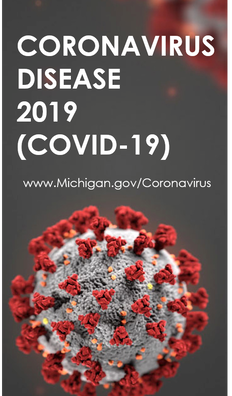Stopping the spread of the virus is the only effective method we have of preventing more infections. Current prevention recommendations have included washing hands more often, cleaning contaminated surfaces and staying away from large gatherings. In response, trade shows and sporting events have been cancelled and churches and theatres are closing their doors for a week or two and are adopting a wait-and-see attitude. Universities and K-12 have extended spring break and cancelled on-campus classes and are moving to online learning until things improve. Recently, even bars and restaurants are being asked to restrict customers or only provide carryout. In the meantime, EHS professionals and HR departments should be following the recommendations from their local and state officials and from OSHA and MDHHS. Those recommendations are aimed at “flattening the Curve” (curve of infection) which means slowing the spread of infection to avoid overwhelming the healthcare system. See this article from the University of Michigan. So, the current infection curve for the COVID-19, that is the number of people becoming infected, is exhibiting an exponential increase. So, as time goes on, we see an increasing number of infected people at an increasing rate. The infection rate topic is illustrated in a Washington Post article that shows a simulated virus in some random, simulated settings. It’s all based on computer models, but it illustrates the point about spreading of infection. If we self-quarantine ourselves (within reason), even for a short while, we help slow down the spread of the disease. Agency Guidelines OSHA’s guideline 3990 can be found at this OSHA link. This guide provides lots of information about COVID-19 and recommendations for you to consider for inclusion in your Infectious Disease Preparedness and Response Plan (IDRP). Some topics you will find interesting include:
The MDHHS has Interim Guidelines for a variety of workplace, school, church and social settings. They include:
The bottom line for managing this disease is to be COVID-Wise, be prepared, avoid exposure and don’t spread it yourself. As always, arm yourself with knowledge. Keep up to date on the latest recommendations from your state and local officials. Here are some other good COVID-19 sources of information to share with your executives and workers: OSHA COVID-19 Web Page Center for Disease Control - COVID-19 Page MDHHS COVID-19 Web Page |
|


 RSS Feed
RSS Feed
